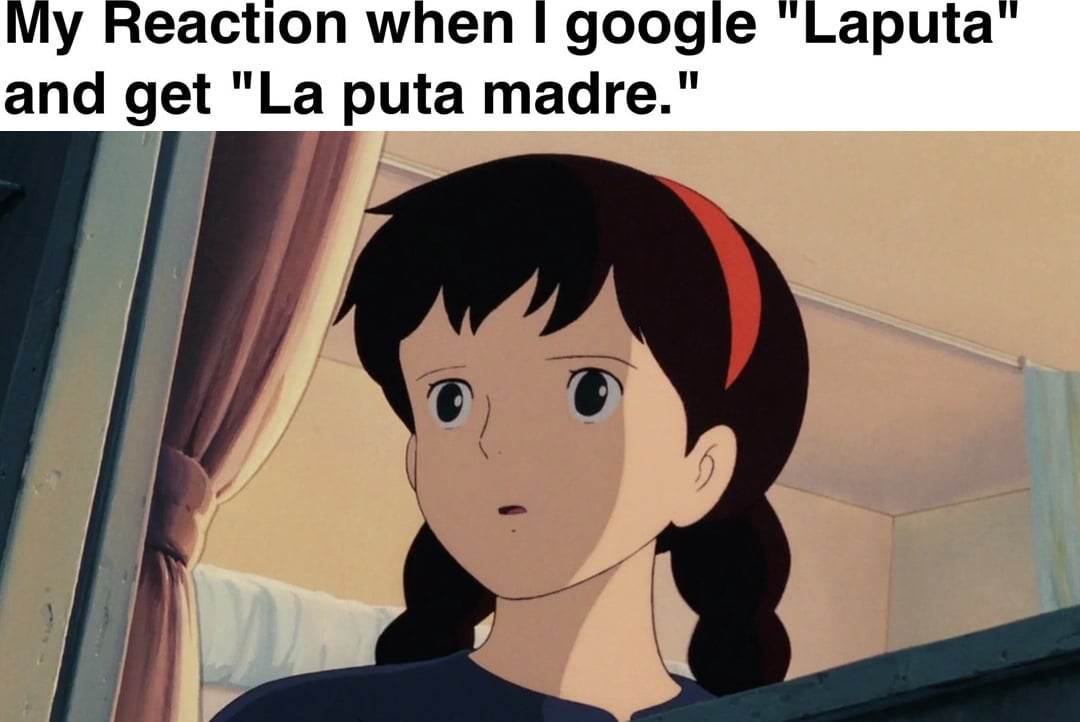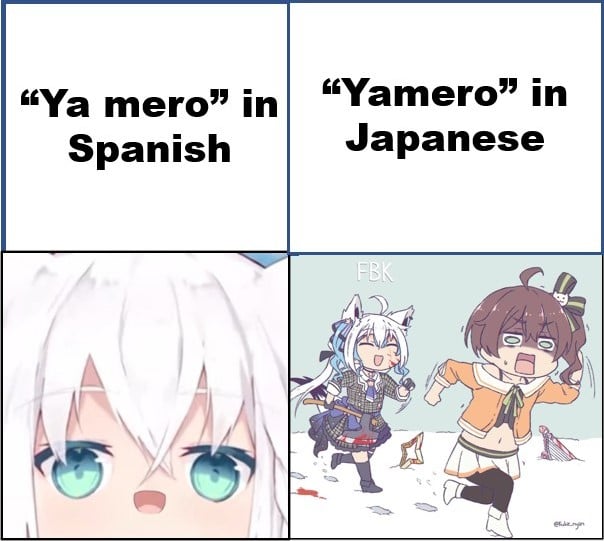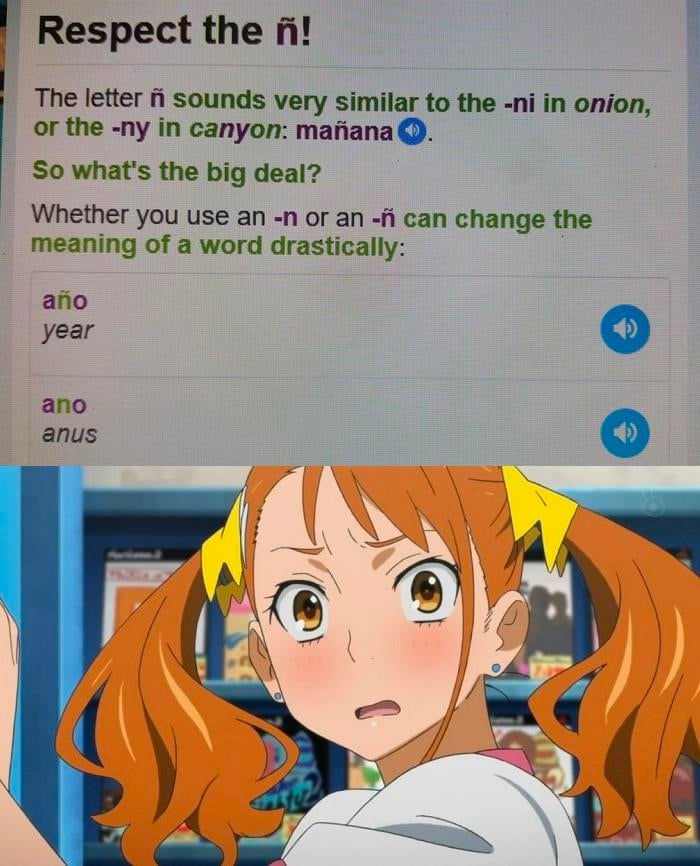Everyone knows that Japanese is a hard language to learn, right? But I found it surprisingly easy, partly because it lacked many of the grammar and pronunciation challenges of some European languages. It even used the same five vowel sounds as Spanish! In this post, let’s explore why Japanese is similar to Spanish, and why it might be easier to learn than you think!
Happy New Year from your Friend in Japan, J-List! We hope 2026 is a year of happiness and peace for you. To get things off right, we’re having a huge site-wide New Year’s Sale through Jan. 6, giving you 15$ off all in-stock products. Start browsing now!
Wait, Japanese Is Similar to Spanish? How??
We all have certain “choice points” in our lives, essentially the same as story branches in visual novels. For me, a big one was deciding what language to study in university. I was terrified of French’s complex grammar and pronunciation and didn’t feel the motivation to take on German or Spanish. In the end, the language I felt the closest emotional attachment to was nihongo, thanks to my years as an anime fan. So I took the plunge and signed up for Japanese 101.
Imagine my surprise when Japanese was not nearly as difficult as I thought. Oh, I had to buckle down and learn hiragana and katakana, the two phonetic “alphabets.” I had to get used to the structure of Japanese sentences, which are subject-object-verb instead of subject-verb-object. And breaking through the wall of verb conjugation (especially informal verbs) also took a while. But in many ways, Japanese was not that difficult to learn.
And best of all, Japanese was easy to pronounce because it used the same five vowels as Spanish (and Italian, and Portuguese). Considering how challenging languages like Chinese or Thai or French can be to pronounce, this was a welcome development.
Why does ‘bitch’ mean ‘slut’ in Japanese? Read nine times Japan changed the meanings of words here!
Japanese and Spanish Have Similar Phonetics
How many vowels are there in English? A, E, I, O, U, and sometimes Y, right? Actually, there are 14 or 15 phonetic vowels used in American English, depending on which dialect you speak. But Japanese has just five vowels, the exact same as in Spanish. They are:
- a as in agua
- e as in Español
- i as in niña
- o as in oportunidad
- u as in usted
That’s it. No messing around with long or short vowels, no dozens of exceptions in how words are pronounced because they were borrowed from exotic parts of the world. Both languages are syllable-based and have a similar rhythm and cadence. So if you speak Spanish (or Italian, or Portuguese), you can learn Japanese and have almost no accent.
(Japanese even has the Spanish “rolled r” sound, although it’s used mainly by yakuza gangsters trying to sound scary. It’s not an official part of the language.)
Honorifics Work Similarly in Both Languages
One challenge in learning Japanese is keigo or polite speech. Japanese verbs come in two flavors. First is the informal or “dictionary” form (because that’s what’s listed in dictionaries), like taberu, nomu, and iku for to eat, to drink, to go. Then you have the formal form, tabemasu, nomimasu, and ikimasu. The verb you use depends on the relationship, age and social status of the person you’re addressing in relation to yourself. Generally, you’ll use formal verbs by default, and informal verbs with family members, children, etc.
This formal vs. informal system feels similar to Spanish. The way tú and usted work in Spanish is almost a perfect match for how you decide whether to use informal or formal language in Japanese.
There’s also the weird tension about addressing a person who doesn’t fall squarely into a neat social grouping, depending on their age or status. Should you call an in-between woman oneesan / señorita, or obasan / señora? We don’t have this particular drama in English (that I’m aware of, at least).
Could the similarities between the Japanese and Spanish languages be one reason anime became such a cultural touchstone in Spanish-speaking countries, especially Mexico? Or is it just a happy coincidence?
Spanish and Japanese Have Many Familiar Words
Learning a new language is always easier when there are familiar words that you can create mnemonic hooks for. For example, it’s easy to guess that Spanish dormir means “to sleep” because we have the word dormitory in English. When Mrs. J-List and I were learning Spanish some years ago, she would accuse me of “cheating” because I could use tricks like this that were unavailable to her Japanese brain.
Often, Japanese words will match because they were directly imported. The Japanese word for bread is pan because bread was introduced here by Portuguese traders in the 16th century. They also brought sugar candies called confeito as gifts to Oda Nobunaga, which is where Japan’s famous kompeito candies come from.
Words can “match up” by accident. Like the similarity between itazura and travesura, which both mean mischief or playing pranks. Or how miru and mira both mean “to look.” Or the way Japanese arigatou and Portuguese obrigado both mean “thank you.” These are just linguistic accidents, though, and totally unrelated. This phenomenon is known in linguistics as “false friends.”
Of course, there are always differences in any language that you need to be aware of. Respect the ñ!
You Don’t Need to Learn a Million Kanji
If you’re interested in studying Japanese but are put off by the seeming impossibility of learning to read and write kanji characters, never fear! You really only need to focus on reading. No one writes kanji anymore in the age of computers and smartphones, not even Japanese people. If you learn 300 characters, you can get around any Japanese city. If you know 500, you can read almost any manga. So maybe learning Japanese isn’t that hard after all!
Thanks for reading this blog post about the similarities between Japanese and Spanish. Have you studied Japanese, and if so, what areas of the language were hard for you? Tell us in the comments below!
Let’s Chat
You made it to the end of this post! Thank you! As a token of our appreciation, enjoy an extra 5% off your next order when you use the code BLOG at checkout. Also, don’t forget to follow J-List on all our platforms!
- Twitter / X, where Peter posts anime booba for you
- Bluesky, where we post several times a day
- Facebook, where we used to share memes and discuss anime
- Discord, if you want to chat with other J-List customers of culture
Happy New Year from your Friend in Japan, J-List! We hope 2026 is a year of happiness and peace for you. To get things off right, we’re having a huge site-wide New Year’s Sale through Jan. 6, giving you 15$ off all in-stock products. Start browsing now!




















